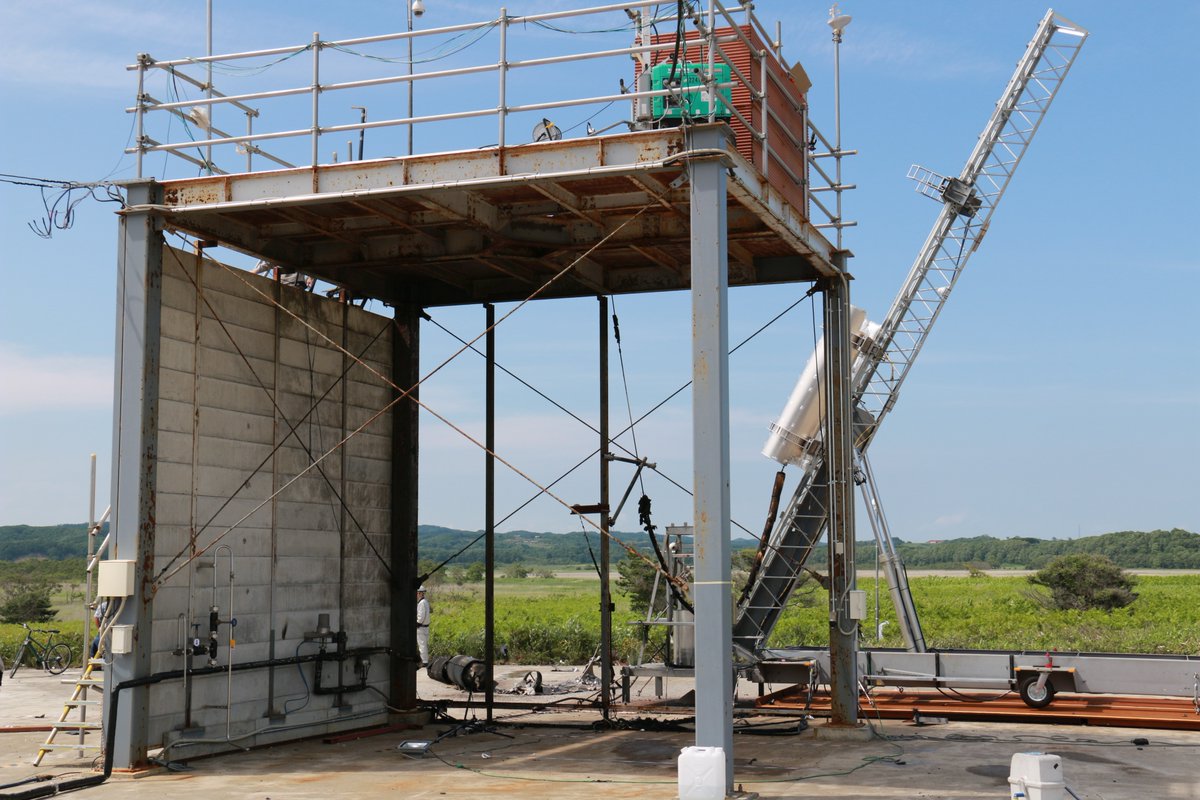Japanese startup rocket explodes in flames


A rocket developed by a Japanese startup has burst into flames seconds after a failed lift-off in northern Japan.
The MOMO-2 rocket, developed by Interstellar Technologies, was launched in Taiki town on Hokkaido, Japan's northernmost main island. It was supposed to reach as high as 100 kilometres into space.
Television footage on Saturday showed the 10-metre pencil rocket lifted only slightly from its launch pad before dropping to the ground, disappearing in a fireball.
Footage on NHK public television showed a charred rocket lying on the ground.
The incident caused no injuries.
Interstellar Technologies president Takahiro Inagawa said he believes the rocket suffered a glitch in its main engine.
He apologised for the failure, and said his team would collect the debris to analyse the problem and improve the rocket.
Saturday's failure was the second after the rocket's first launch last July.
The project was started in 2005 by maverick entrepreneur Takafumi Horie, founder of internet service provider Livedoor, who was joined by science journalists and other space fans in an effort to develop a small, lightweight, and low-cost rocket to send information satellites into space.
Meanwhile, in New Zealand, after almost a week of waiting, New Zealand-based Rocket Lab failed to launch its first fully commercial payload into orbit.
"The team is standing down from this launch window to take a closer look at the motor controller behavior again. We're still not happy with the data, and as we all know, the only metric that counts in the launch business is 100 percent mission success," Rocket Lab said on Thursday.
US-owned Rocket Lab runs the world's only privately owned launch facility, and focuses on small payloads, like satellites. Although substantially smaller than what Elon Musk's SpaceX is doing, Rocket Lab's 17-metre-long Electron rockets use 3D-printed engines and can carry payloads of up to about 150 kilograms.
The company had planned to put four satellites and a technology demonstrator to low earth orbit.
On Friday, SpaceX launched its fifteenth Commercial Resupply Services (CRS) mission to the International Space Station, and is set to arrive at its destination on July 2, US time. The company said its Dragon module will remain at the space station for a month and will return to Earth with 4,000 pounds of cargo.
"Under the CRS contracts, SpaceX has restored the United States' capability to deliver and return significant amounts of cargo, including live plants and animals, to and from the orbiting laboratory," the company said. "A variant of the Dragon spacecraft, called Crew Dragon, is being developed for US-based crew transport to and from the space station."
With AAP
Related Coverage
Australian space capabilities would boost our Five Eyes role: Former astronaut
Defence is the space industry's biggest customer, says Pamela Melroy, so the Australian Space Agency must work closely with them. But first, it must find a strategy, and a home.
China to build a new space station as ISS faces investment woes
As the International Space Station (ISS) faces future funding cutbacks, China has jumped into the fray with off-world plans of its own.
It's Business Time: Rocket Lab prepares for launch out of New Zealand
Step aside SpaceX, the Kiwis are about to launch into space.
Replay: Watch the SpaceX Falcon Heavy rocket test flight
SpaceX's launch of its Falcon Heavy Rocket sets up a pathway for future missions that may someday lead to humans becoming a multiplanetary species. Watch the entire launch replay from SpaceX.
SpaceX rocket could cut business flights to anywhere on earth to 60 minutes or less (TechRepublic)
SpaceX CEO Elon Musk detailed how a rocket could enable travel anywhere on Earth in under an hour, for the same price of an airline ticket. If successful, it could change business travel forever.